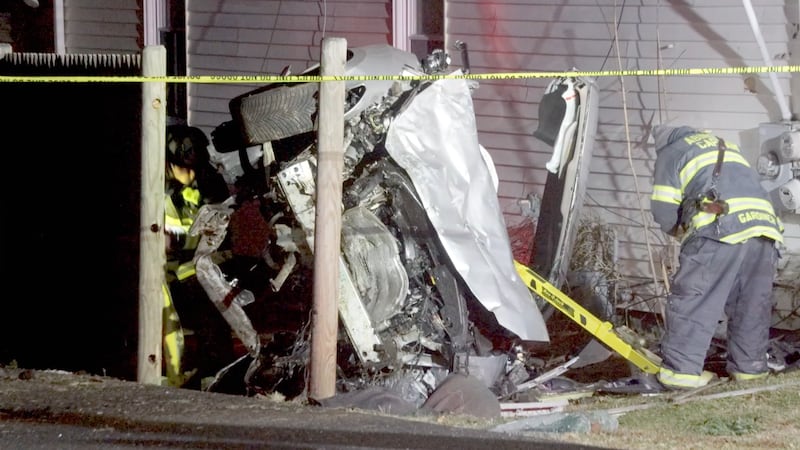BOSTON — When the novel coronavirus first appeared in Wuhan, China in late 2019, the concern for the Centers for Disease Control here in the United States was not if it would arrive in the U.S., but when it would arrive.
In Massachusetts alone, 92 people have tested positive for the virus -- all but one of those cases remains unconfirmed by the CDC -- and panic has set in among those concerned about the vulnerable population.
Thus far, the virus known as COVID-19 has a demonstrated fatality rate of about 3.4%, mostly among elderly and immunocompromised individuals.
Now that the virus is here, the attention of public health and safety officials turns to what is called “flattening the curve.”
This is not a drill! I am a lawmaker and a public health professional. The @WHO has declared #COVID19 a pandemic. Everyone should limit contact with others NOW! I cancelled attendance at all meetings & events for foreseeable future. I recommend do the same. #FlattenTheCurve
— Tami Gouveia (@TamiGouveiaMA) March 11, 2020
This next phase of defense against the outbreak includes social distancing, which you’ve probably heard a lot about. That means keeping mostly to yourself and remaining in small groups or around immediate family. That means avoiding unnecessary travel and large gatherings.
Events like the Biogen meeting in downtown Boston demonstrate how quickly a gathering that involved close contact can lead to an outbreak. So far, at least eight employees who were at the meeting have initially tested positive for COVID-19.
Measures taken at this point, like canceling the Boston St. Patrick’s Day Parade, are aimed at flattening the curve. By canceling events that bring people into close contact and increase the likelihood of spread, the rate at which new people become sick will slow down.
Thus, flattening the curve as seen below.
If you only learn one thing about #COVID19 today make it this: everyone's job is to help FLATTEN THE CURVE. With thanks to @XTOTL & @TheSpinoffTV for the awesome GIF. Please share far & wide. pic.twitter.com/O7xlBGAiZY
— Dr Siouxsie Wiles (@SiouxsieW) March 8, 2020
You might remember seeing graphs like this in high school math showing exponential growth at the start of the curve. When governments talk about social distancing, hand washing and quarantine procedures, they are looking to slow and reverse that growth. They are hoping to flatten the curve.
According to research conducted on the epidemic in China, scientists estimate the number of infections doubles every six days until major mitigation measures are implemented.
Independent self-sustaining outbreaks in major cities globally could become inevitable because of substantial exportation of presymptomatic cases and in the absence of large-scale public health interventions. Preparedness plans and mitigation interventions should be readied for quick deployment globally.
— Prof Joseph T Wu, PhD; Kathy Leung, PhD; Prof Gabriel M Leung, MD - The Lancet
As the number of cases of infected individuals rises, it will eventually head toward that dotted line in the graph indicating the limit of our current healthcare system.
According to the American Hospital Directory, there are around 15,000 staffed beds in acute care hospitals -- meaning hospitals that provide inpatient treatment for illness or injury -- in the state of Massachusetts. Dr. Michael Mina, who teaches epidemiology at Harvard Public Health and is a pathologist at Brigham & Women’s, told Boston 25 News epidemiological models are predicting 20% or more of Americans, or about 60 million people, could become infected with COVID-19.
The unimpeded spread of the virus would overwhelm any available capacity rather quickly with an estimated 10% hospitalization rate. Mina says we can learn something from the ways both China and South Korea dealt with the epidemic and that is that containment works, but while China basically sealed off cities, Mina prefers to go with South Korea’s route - mass testing.
“In the ideal setting we should be able to do something like South Korea did, which is set up drive-through testing -- allow people to be informed whether they are carrying this virus. And be able to act accordingly if so. And that usually means go home and pretty much self-quarantine self isolates for a couple of weeks,” said Mina.
The problem a few weeks back was that there weren’t enough tests to do mass testing. Now there are but Mine says the problem is the lack of manpower, facilities, and even in some cases, a shortage of the need reagent to carry out the test.
Again, flattening the curve is about reducing the rate of new infections and decreasing the strain on our healthcare system, making the required care available to those who really need it.
So when the governor or the mayor stresses avoiding large gatherings, washing your hands, not touching your face, etc., etc. -- this is the end goal.
This is why governments and health officials have asked companies to extend sick leave for workers and offer remote working opportunities for some employees.
The goal is to flatten the curve.
MORE COVERAGE:
- Live updates: Walsh says Boston Marathon is still on, calls it a ‘very fluid situation’
- Harvard moves to online classes, asks students not to return after Spring Break
- Boston’s St. Patrick’s Day Parade canceled amid COVID-19 concerns
- Coronavirus live updates: At least 4,856 people tested for virus, CDC says
- Coronavirus: Live audiences banned from ‘Jeopardy!’ and ‘Wheel of Fortune’ tapings
- How to properly clean and sanitize your phone
© 2020 Cox Media Group





